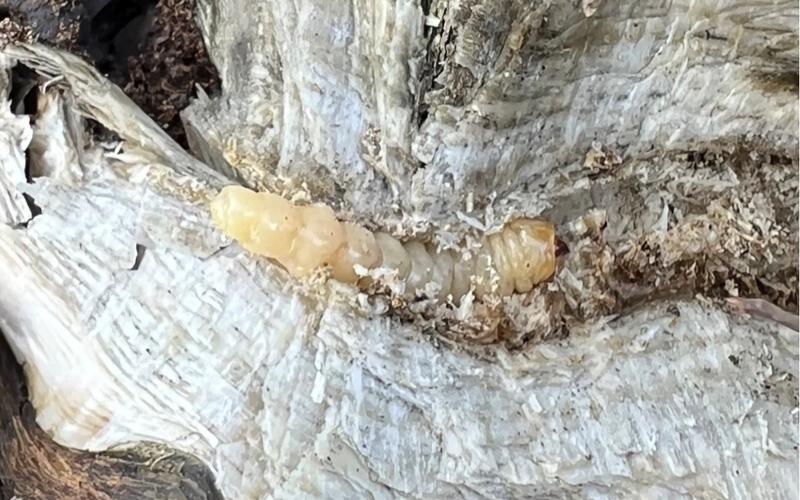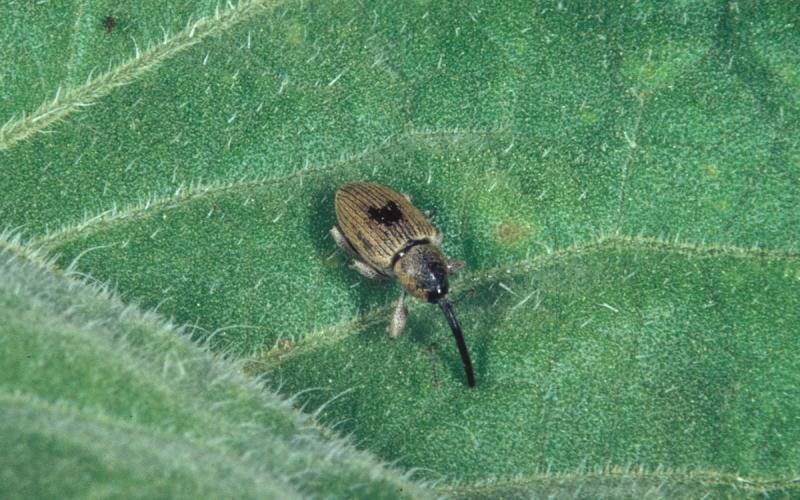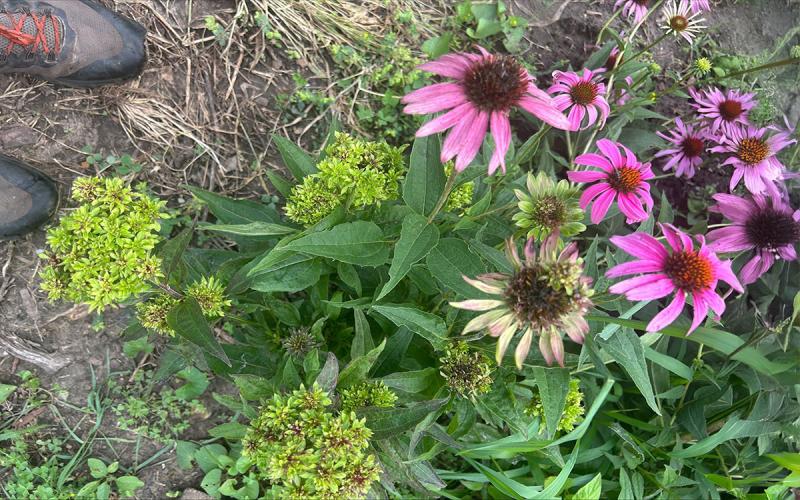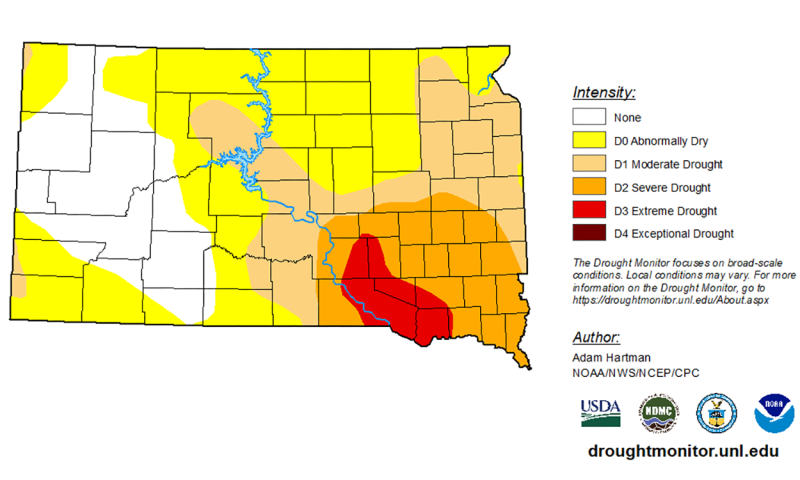
Written collaboratively by Adam Varenhorst, Philip Rozeboom, Patrick Wagner, and Brad McManus.
Originally Submitted: June 26, 2023
Dectes stem borer are a major topic for sunflower management in South Dakota every year. However, seasonal weather conditions can cause this pest to be more of an issue later in the season. If drought conditions persist in South Dakota, Dectes stem borer may cause more problems (Figure 1).
Dectes stem borer larvae girdle stalks and cause lodging, which can be prevented by having stalk diameters that are greater than one-half of an inch. Drought conditions can result in smaller stalks, which the larvae can girdle much more easily. The dry conditions will also cause sunflower stalk conditions to deteriorate earlier in the season, which forces the larvae to prepare for overwintering earlier in the season. As a result, lodging occurs before the sunflowers can be harvested, which causes increased yield losses.
Identification
Adults
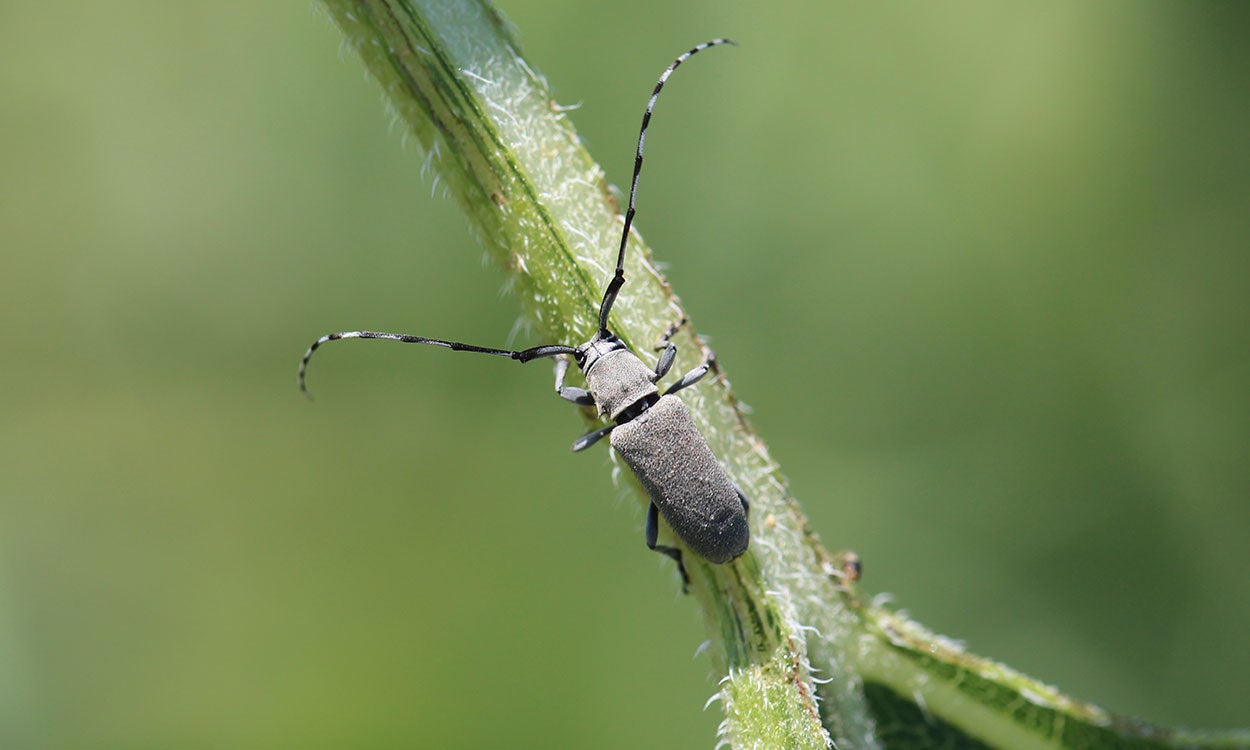
Dectes stem borer adults are gray and slender (Figure 2). They are approximately three-eighths of an inch in length with antennae that are as long as the body The antennae have a distinctive black and gray alternating pattern.
Larvae
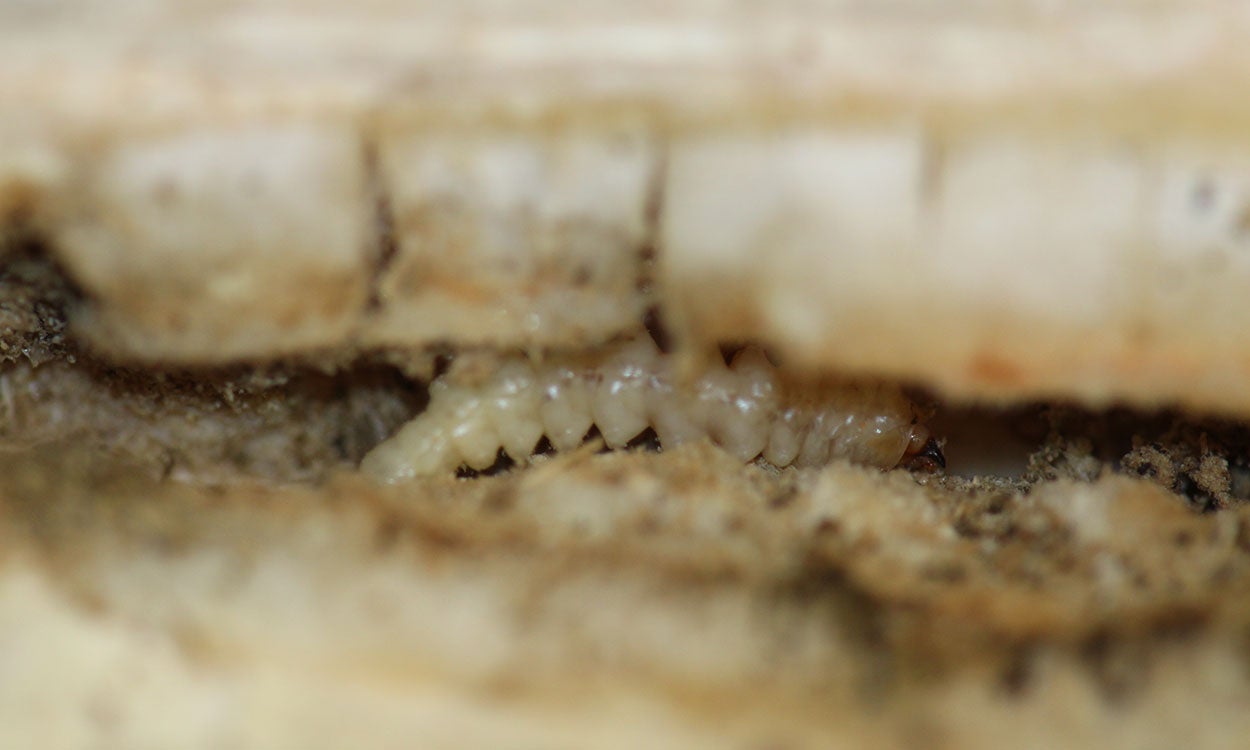
The larvae of the Dectes stem borer are present within sunflower stems (Figure 3). They are white to cream colored with an orange to brown head capsule. The larvae have an “accordion” like appearance due to constrictions between each body segment. They are legless and can be approximately one-half to five-eighths of an inch in length.
Scouting and Management
Dectes stem borer adults emerge in June through July and will seek out host plants. Although the adults may be observed, management is not successful or recommended due to the long emergence period. Females lay single eggs in each stem of the host plant. In sunflower, the Dectes stem borer larvae tunnels through the stem and feed on the pith tissue. Only one Dectes stem borer larva is observed in a stalk due to their cannibalistic nature. Although the larvae will feed on tissue within the stalk that results in a reduction of water and nutrient movement within the plant, no yield reductions have been observed from this activity in sunflower. In the late summer, the successful larva moves towards the base of the plant and will girdle the stem approximately two inches above the surface of the soil. The larva creates a cell below the girdle line for overwintering. In sunflower, the Dectes stem borer can only girdle approximately one-half of an inch outward from the center of the stalk. Therefore, larger diameter stalks can prevent the girdling from being successful and reduce the risk of lodging.
Scouting for this pest should consist of monitoring fields during June and July for adult beetles.
Insecticides are not an effective management strategy for the Dectes stem borer. If adults are observed, monitor the field throughout the summer to determine the level of infestation. In the fall, scout lodged plants by splitting the stem and examining for evidence of feeding or the presence of the larva.
Insecticides are not effective at managing this pest due to the difficulty of timing an insecticide application to eliminate adult beetles. However, there are several other practices that can be implemented to reduce lodging and yield losses. These include:
- Reducing planting populations to increase the diameter of the stalks.
- Managing weeds within and around fields. Alternative hosts that are preferred for egg laying by the Dectes stem borer include wild sunflower, cocklebur and giant ragweed.
- Harvest sunflowers as early as possible to reduce the impact of lodging. This strategy may result in the increased need to dry the sunflowers for storage.
- Tillage to bury sunflower at least 2 to 3 inches deep. This strategy is not recommended for areas where no-till practices are employed.
